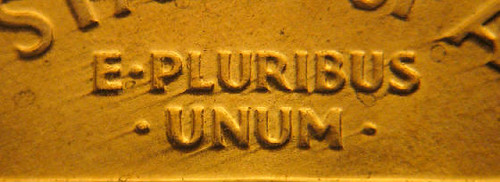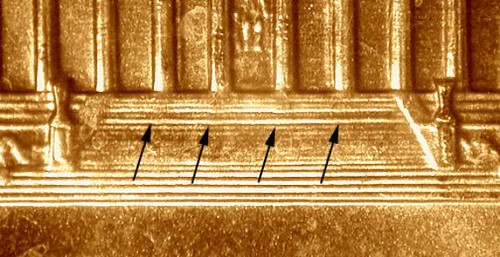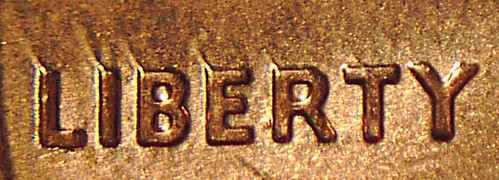
PREV ARTICLE
NEXT ARTICLE
FULL ISSUE
PREV FULL ISSUE
NUMISMATIC VOCABULARY: TRAIL DIES
Last week I published Jeff LaPlante's review of The Authoritative Reference on Lincoln Cents by John Wexler and Kevin Flynn. As I was merrily editing the issue, I noticed what I thought was certainly a spell-check error and changed two instances of the phrase "Trail Dies" to "Trail Dies". Bad, editor, BAD! Somebody shoulda slapped my fingers.
-Editor
Eric von Klinger writes: I haven't seen the revised edition of the Wexler-Flynn "Authoritative Reference" on Lincoln cents, but your reviewer has B.J. Neff contributing a section on "trial dies." B.J.'s pioneering studies have been on "trail" dies, a different animal altogether. The "trails" are raised marks resembling streaks typically emanating from peripheral lettering. To read the earlier E-Sylum article, see: BOOK REVIEW: THE AUTHORITATIVE REFERENCE ON LINCOLN CENTS, SECOND EDITION (www.coinbooks.org/esylum_v13n01a04.html)
At my request Jeff LaPlante provided us with the following great writup on trail dies titled "The Edgar & Kuykendall Specimens: A History of Trail and Wavy Step Die Varieties". The images are courtesy Traildies.com. Thanks!
-Editor

In last week's E-Sylum I wrote a review on The Authoritative Reference on Lincoln Cents Second Edition by John Wexler and Kevin Flynn. In the review there was an error in the spelling of a new variety of Lincoln cent, which was discussed in relation to an article on "Trail Dies" by B.J.Neff. This article is meant to clear up that minor detail, but more importantly to discuss Trail and Wavy Step die varieties. The history surrounding this relatively new variety has in its roots a Lincoln cent submitted for examination by G. J. Lawson to John Wexler in 1994. Upon examination of the coin Mr. Wexler was convinced that the coin in question was a doubled die. In that belief he listed the coin as 1994 1c WDDR-004. But how can this be, you might ask yourself? The United States Mint had just recently changed the production process in order to eliminate doubled dies by converting to the single squeeze hubbing process. In order for us to understand the single squeeze hubbing process it might be relevant to also understand how the system worked in prior years. In that past, United States Mint technicians used the following process. The approved engraving which is on an epoxy plastic cast is placed on a transfer engraving machine called a Janvier Transfer Engraving machine or pantograph. The pantograph engraves the image on to the Master hub. The Master hub is a tool made in hardened steel that contains an image of the coin. The Master hub is used to impress a coin's image onto a Master Die that is then used to create the Working Hub. This working hub will be a positive and will have all of the design elements needed to create the dies that will be used in the presses. These dies are called the working dies. The working hub is used many times to create multiple working dies. This process is where most of the design errors occur. The working hub must be inserted into the hubbing press up to four times (up to nine images are known for Morgan dollars, and seven have been known for a foreign coin) in order to create a good transfer to the working die. If during one (or more) of those impressions the working hub or the working die is not seated just so then any number of issues might arise. The most of famous of these is the doubled die. The "single squeeze" restrained hubbing process was supposed to eliminate this anomaly for the one and five cent coins in the middle part of the 1990's, and for the balance of United States coinage in the years following. The Mint had begun to experiment and to produce coins with the single squeeze method in Fiscal Year (FY) 1986. However as with most things created by man one issue resolved creates another unforeseen. In the year 2000 Kenneth Edgar submitted a coin to Ken Potter (coauthor with Brian Allen) of Strike it Rich with Pocket Change) and the proprietor of Variety Vault on the web. Potter recognized the coin as the 1994 WDDR-004 (Lawson example) attributed it as such, and assigned the numbers 1994 1c VCR#2/DDR#2 to the coin. Ken was also the first person to call the anomaly "Trails" when they occurred on characters or designs outside of the steps.

In 2003 Harold Kuykendall wrote to Ken Potter and enclosed a 2003 Lincoln cent for analysis and attribution. Mr. Kuykendall wrote in the letter with his submission that the specimen had what appeared to be "Wavy Steps." These wavy steps are located on the reverse of the coin at the base of the Lincoln Memorial below the columns. The Kuykendall coin not only had the trails and the wavy steps; it was also a Doubled Die. This was simply not supposed to happen with the single squeeze method! Potter was astounded by the find and announced this to the world in article written in several publications. Shortly thereafter Billy Crawford, another well known numismatist, and variety attributor, discovered a similar 2003 Lincoln cent with the same varietal markings as the Kuykendall specimen. It is at this point in the movie where it was said, "If there is more than one coin Watson, with the exact same markings, you may deduce that you have a die variety," "Quite so Holmes, quite so." A third variety was found soon after by B.J. Neff, a 1999 Lincoln cent which exhibited the "wavy steps." Since the time of Lawson's discovery over seven hundred different types of the trail and wavy step die variety have been identified. The trail and wavy step variety is not a doubled die and since has been identified as a design extension or a continuation of the design. I should think it might want to be called a design type variety or just plain design variety. This type of variety and other doubled die coins are the result of die/hub slippage during the hubbing process the result of which are design varieties which are created around the center of the die. This has resulted in hundreds of new types of doubled dies and other design varieties. According to Mr. Neff these varieties are available because they are newly discovered, and there are potentially, many more of these yet to be found in rolls and bags of United States, and other country's coins. The United States Mint is aware of the issue and acknowledges its existence but to this writer s knowledge has no plans to address it. These coins do command an extra premium, although at this time the market forces seem to be unaware of their existence. There is a website devoted to the subject and which is kept up to date by noted numismatists B.J. Neff and Bob Piazza and it is located at http://traildies.com/, the subject is covered in The Authoritative Reference on Lincoln Cents Second Edition by John Wexler and Kevin Flynn, and it is also covered by Brian Allen and Ken Potter in Strike it Rich with Pocket Change. The Trail and Wavy Step variety web site is a wonderful place to point your browsers in order to find an encyclopedias worth of information and also the Lincoln Cent Resource on the web at www.lincolncentresource.com/TrailsandWavySteps.html .

I am not an expert at the inner workings of the United States Mint and have only just read their processes, procedures, and reports. The creation of the master hub, working hubs, and the working dies used to create United States coins and medals is best taught when accompanied by photographs and diagrams. It is a complicated process. If you wish to create a better awareness of the process suggested reading includes The Error Coin Encyclopedia by Arnold Margolis, the publications previously mentioned in this article, and of course you may visit one of the many sites on the web that details the process.
Thanks again, everyone, for setting us straight. Great photos. Best sure to check out the web sites for more information.
-Editor
Wayne Homren, Editor The Numismatic Bibliomania Society is a non-profit organization promoting numismatic literature. See our web site at coinbooks.org. To submit items for publication in The E-Sylum, write to the Editor at this address: whomren@gmail.com To subscribe go to: https://my.binhost.com/lists/listinfo/esylum All Rights Reserved. NBS Home Page Contact the NBS webmaster 
|